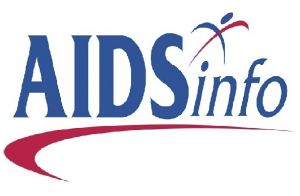US adult treatment guidelines updated (May 2014)
27 May 2014. Related: Guidelines.

Simon Collins, HIV i-Base
On 1 May 2014, the latest update to DHHS Guidelines for the Use of Antiretroviral Agents in HIV-1-Infected Adults and Adolescents was published online.
As with previous updates, changes in the text are highlighted in the PDF file using a yellow background. It is important to note the strength of the recommendation (A, B or C – with C being optional) and quality of evidence rating for each recommendation (I, II or III – with III being only expert opinion).
Main changes include:
- A new section on ART costs in relation to adherence and use of generic drugs and potential strategies for cost containment.
It is notable that this is the first time the DHHS guidelines have focused on costs in this way. The section highlights the considerable challenges to treatment in the US, with variable health coverage and a complex system of insurance and payment structures, including cost-sharing, co-payments, prior authorisations, and incentives both for and against use of cheaper generics.
The main updates to existing sections include:
- Less frequent CD4 count monitoring is recommended for people with viral suppression on ART for more than two years. The potential for cost savings is also referenced. For people with a CD4 count 300-500 cells/mm3 this is recommended every 12 months (BII). For those with a CD4 count above 500 cells/mm3, CD4 monitoring is now optional (CIII). More frequent CD4 count monitoring is recommended if viral load blips or if clinical symptoms occur (AIII).
- Monitoring of other lymphocyte subsets (e.g., CD8, CD19) is no longer seen as useful given their additional cost. (BIII).
- Viral load monitoring on stable ART is recommended every 3-4 months for the first two years, and extended to every six months thereafter (AIII).
- Although ART is still recommended at CD4 >500 cells/mm3, it has a low rating (CIII).
- • Neurological complications are included in a new review (although not accompanied by recommendations for management).
- ART is now recommended for HIV long-term slow progressors if the CD4 count is falling over time (AII).
- The guidelines now refer to “recommended” rather than “preferred” regimens. These are categorised by viral load. If viral load is above 100,000 copies/mL, rilpivirine and abacavir/3TC (except with dolutegravir) should not be used.
- Drugs no longer recommended for first-line therapy include AZT, nevirapine, unboosted atazanavir, ritonavir-boosted fosamprenavir/r or saquinavir/r, and maraviroc.
- A new data review is included for choosing between recommended options within the NRTI, NNRTI, PI and INI classes, updated with recent studies, and including dolutegravir.
- HIV drug resistance with detectable viral load includes the importance of discontinuing integrase inhibitors and preferential use of boosted-PI based treatment.
- The section on adolescents and young adults includes noting that a quarter of the 50,000 infections diagnosed in 2010 were in people aged 13-26, and that in this age group, 75% were MSM and 57% were among black/African Americans. Lower response rates to treatment are highlighted (emphasing the need for greater support) and the positive impact of text messaging to help adherence is included in a new reference.
- The section on adherence has been expanded and updated.
- Suicide is given a greater emphasis as a potential side effect of efavirenz (Table 14).
- Changing treatment to avoid side effects has a new section including a new table on switching options within drug class categorised by symptoms (Table 15).
- Drug interaction tables are updated (including cautions between ritonavir-boosted protease inhibitors and both corticosteroids and antimalarial drugs (also for NNRTIs).
These are important guidelines. All current and archived guidelines are available from the AIDSinfo website.
Reference:
US DHHS Guidelines for the Use of Antiretroviral Agents in HIV-1-Infected Adults and Adolescents, 01 May 2014.
http://aidsinfo.nih.gov/guidelines
http://aidsinfo.nih.gov/contentfiles/lvguidelines/adultandadolescentgl.pdf (PDF)

